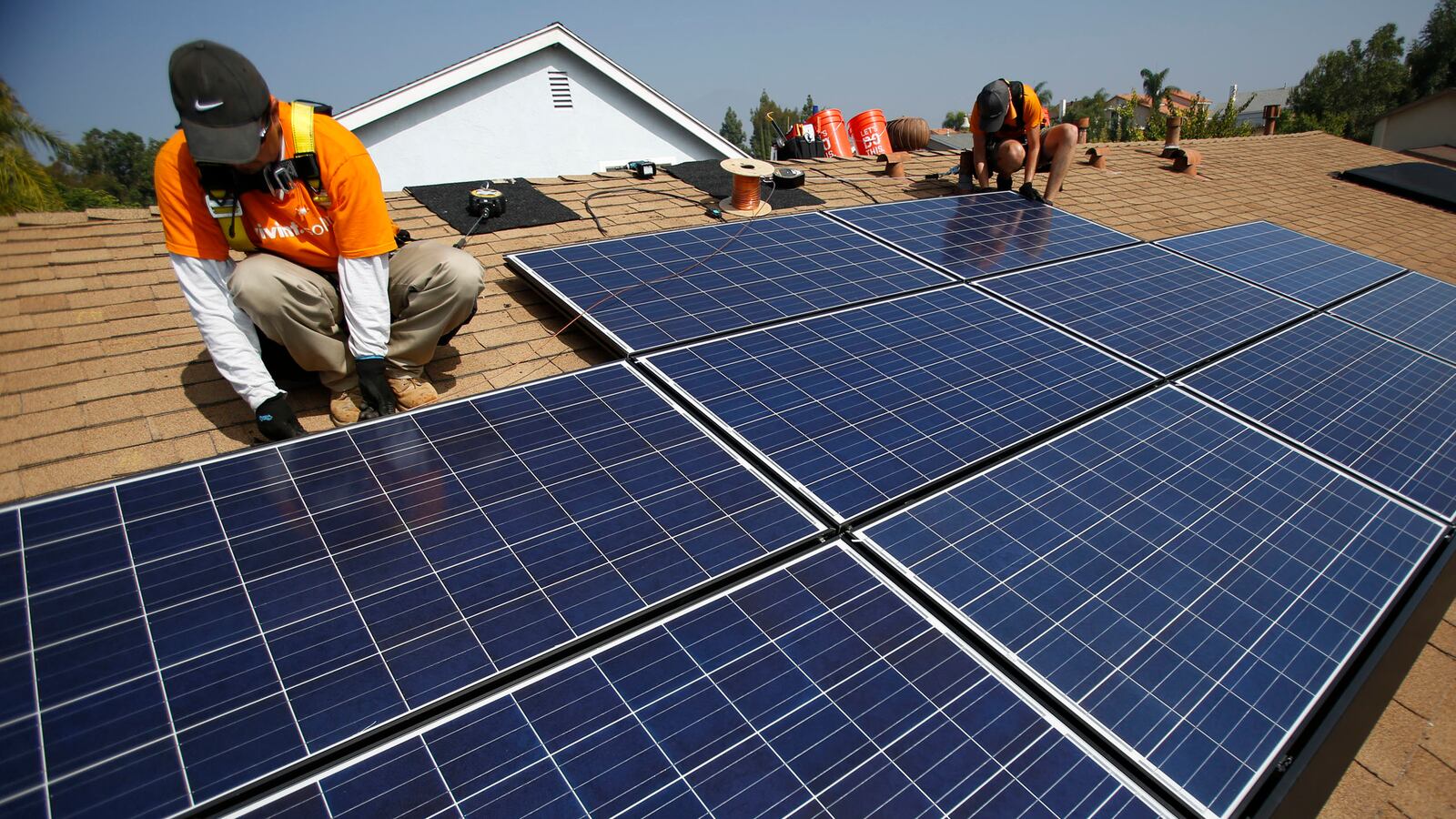Homebuyers have become accustomed to the accoutrements of modern life being listed as standard in newly constructed homes: granite kitchen countertops, USB outlets, energy-efficient lighting.

But one small builder in the San Fernando Valley in California is adding a new standard: a dozen-odd solar panels.
Since 2012, California Home Builders, a 20-employee outfit based in Canoga Park, has planted electricity-generating systems on the roofs of the scores of homes it has built.
High upfront costs have been one of the great deterrents to more rapid adoption of energy-efficiency products, from hybrid cars to solar installations. Generally, they are presented as a purely discretionary buy. Presented with a choice, penny-pinching consumers often forgo such investments—even if they offer the opportunity for long-term savings. Homeowners seeking to add solar, until recently, had to kick in up to $30,000 upfront, clear space on the roof, and hire contractors to build the system and connect it to the grid.
But the climate is changing. California’s Million Roof solar initiative is providing incentives and encouragement. Companies like Solar City offer leases, which allow people essentially to put solar panels on their roofs without splashing out the cash to purchase the system. And now in a few areas solar systems are starting to come as a prebuilt feature—not an option.
Shawn Evenhaim, the founder and chief executive officer of California Home Builders, grew up in Israel, where solar water heaters can be found on the roofs of most homes. He was mystified to learn that more homes in sunny Southern California didn’t have solar panels. So he began to think about ways to make the homes and apartments he was constructing greener. “We’re developers who care for the environment,” said Evanhaim, who drives a Tesla.
But historically, innovations like the Tesla and solar panel systems have been playthings for the rich, not utilities for the middle class customers to whom Evanhaim was pitching starter homes in the Valley. His customers live in Sherman Oaks, not Bel Air. The company’s homes tend to sell for between $300,000 and $400,000, which is the middle of the market in the Los Angeles region. “We don’t like to sell a lot of options on our homes,” he said. “What you see in the model house is what you get.”
The rise of solar leases—in which a third party buys, installs, and owns the panels placed on a roof and keeps the associated tax breaks—made it possible for Evanhaim to include panels as a standard feature, without adding much to the purchase price. “If you offer it as option, people will say they won’t spend an extra $10,000 on it,” he said. “So we worked to come up with a lease program.” When people buy a home, they simply assume the lease, which costs between $40 and $60 a month, as part of the closing process.
In 2012, California Home Builders completed its The Village at Pierce, a 57-unit development in Pacoima in which each home had a solar system. The company has done the same with projects it has completed since then: the 30-home Glenoaks development in Pacoima; an 18-home development in Sylmar, and a 13-unit development in Sherman Oaks.
Evanheim isn’t building McMansions, or eco-palaces built by Hollywood stores. These are smallish homes in the Valley—between 1,500 and 1,800 square feet, sited on small lots, and aimed at first-time home buyers. The systems, generally about 15 panels, are likewise modest. But the savings are real. People pay for the solar leases and get rebates if they use less energy. Solar City, the Elon Musk-backed giant that says it signs up a new customer every three minutes, has worked on several of the projects.
Designing homes with solar as a standard imposes some burdens on developers. Each house must have at least one southern-facing roof, skylights that could break up panels have to be relocated, and some extra wiring and connection work has be incorporated into the construction process. But Evanheim says the marketing boost solar provides more than makes up for any costs. “People feel better about the home they are buying,” he said.
Several large builders offers solar panels as an option, though they have yet to follow California Home Builders’ lead and make them standard. But they soon might. Some towns in California have already passed zoning rules mandating that new construction come with solar panels. Evanhaim is anticipating a climate in which state-wide regulations require them: “We always want to be ahead of things.”





